In February 2017, USA Today overtook Fox News to become the biggest US news publisher on Facebook.
By May 5th, USA Today announced that they had asked the FBI to look into an enormous rise in fake followers. Facebook had deleted 6 million page likes from USA Today’s page, and claimed as many as 200m across the platform had been identified as fake and purged.
Followers were not the only thing that increased for USA Today. Looking at the monthly engagement across all their Facebook posts, we see a huge rise which began in June 2016. If this was a case of only fake followers, it would not have much significance beyond a single inflated fan count. Engagement on articles however, will have a significant effect in terms of how many people see that content.
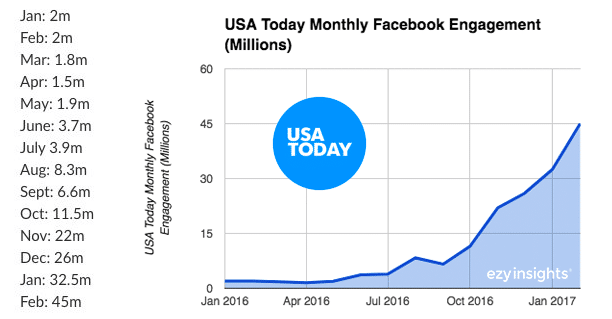
Most publishers across the US media landscape saw their engagement levels rise in the run up to the US Presidential election. Yet USA Today’s rise was disproportionate. This motion graphic shows engagement for a range of US News publishers from Jan 2016 to Feb 2017 (click for a video version):
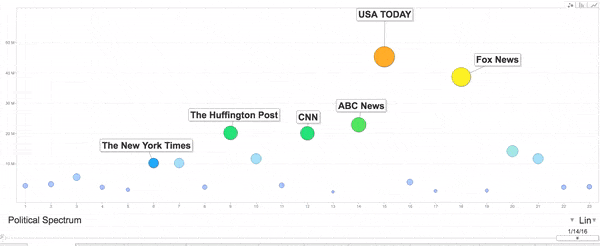
How do we know this was fake engagement?
Using EzyInsights data recorded at the point the engagement was made, we compared these numbers against what Facebook is currently reporting for the same posts. Picking out two random posts we saw discrepancies of over ten thousand likes/reactions. The story about the Indonesian plane crash went from over 30k likes to 13k. The Obama Biden article from 41k to 30k.

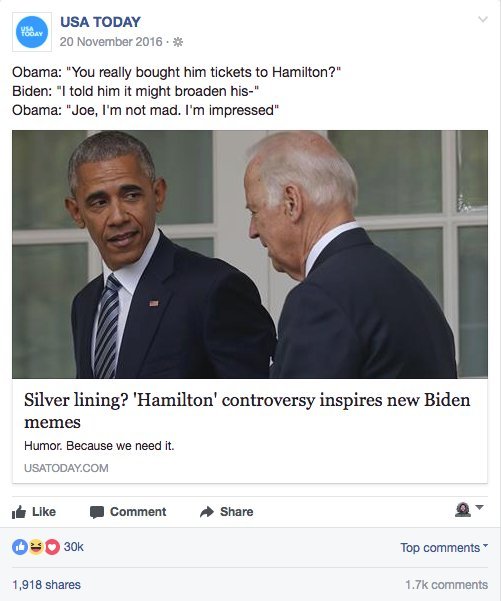
There was a similar difference in engagement on every post examined. Here we focused on 23 posts made on March 12th 2017.
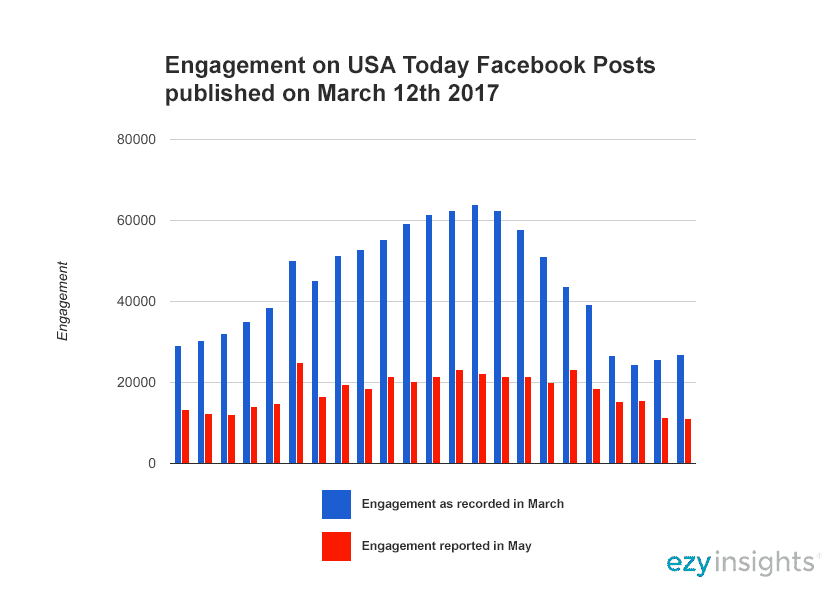
The blue columns represent the original numbers recorded by EzyInsights on March 12th, compared with the red columns representing how much engagement Facebook reported 2 months later in May. This gives an idea of how much of USA Today’s engagement was completely fake, awarded by fake followers and accounts who have since been deleted. The picture is largely consistent across all USA Today Facebook data. (If you wish to receive a copy of this data, please contact us directly through our website).
What are the things that stand out here?
Firstly the sheer scale of this fake engagement – logistically this would require dedicated resources to set up and maintain. This is not hundreds of fake accounts set up to help boost a page, as Buzzfeed uncovered with Britain First. This is almost 6 million followers and tens of millions of post engagement, having a significant effect on what Facebook users in the US will read.
Secondly, why wasn’t it noticed earlier? Looking at this graph shows that USA Today’s rise might have seemed plausible until March 2017 when it overtook FOX News. USA Today tended to follow the same trend as every other publisher until then. In February 2017 it became obvious just how large its engagement figures had become, dwarfing everyone else in the US media industry. The fake engagement falls off abruptly when Facebook deleted the 6 million fake followers.
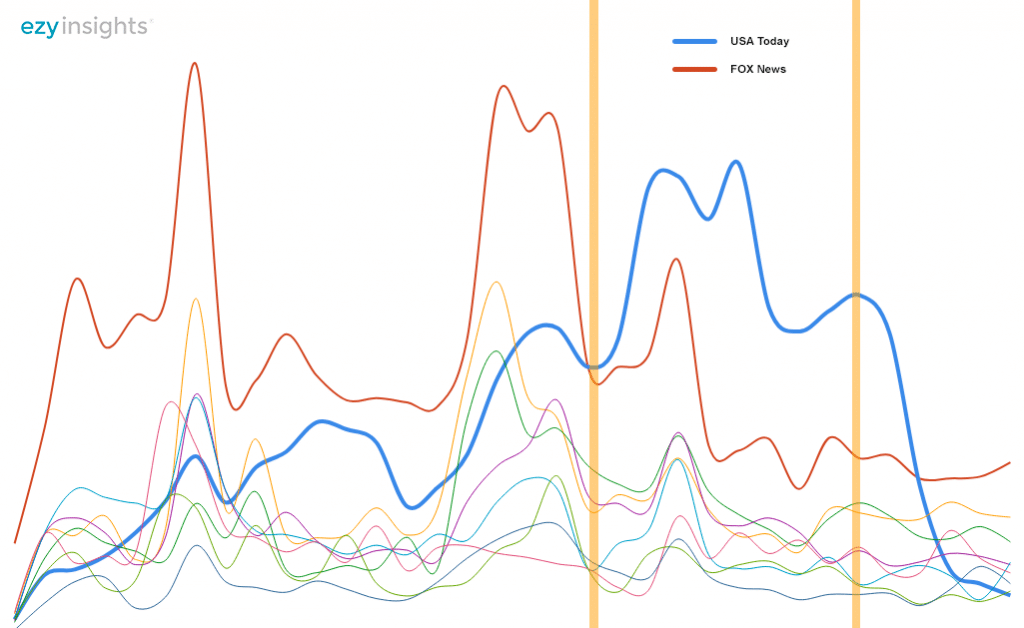
Thirdly, the effect on reach. This amount of false engagement will have massively increased the reach of USA Today’s content. The newsfeed algorithm is tuned for engagement and we know that engagement is strongly correlated with reach. Real people will have seen USA Today articles in their feeds thanks to this fake engagement. This will almost certainly have been at the expense of other publishers.
Finally, who lost out to the reach gained through this fake engagement. In terms of political leaning, USA Today’s typical audience is almost directly in the middle of the Conservative/Liberal spectrum.
According to the Pew Research Center, USA Today readers consider themselves slightly left of centre. Newsfeed space occupied by USA Today’s stories will have likely been at the expense of the publishers that share a similar audience. In this case that would include ABC News, Bloomberg, Wall Street Journal, NBC, CNN and MSNBC and possibly others to the left who may also share an audience.

The USA Today fake engagement episode will have distorted the type of news read by moderate liberals on Facebook. An article they might have seen about Trump or Clinton (likely in favour of Clinton) in the run up to the presidential election may have been bumped from their newsfeeds for more lightweight articles from USA Today such as “Walmart program: Stash cash in savings account, win prizes.” or “Why are laptop makers ruining their own keyboards?” directly thanks to fake engagement.
If this was planned, why not target publishers on the right?
As covered in numerous articles about filter bubbles, there is a strong dividing line along political orientation on Facebook. If a publication such as Breitbart was to have received the same amount of engagement as we saw with USA Today, it is unlikely that reach would have increased at the expense of more liberal mainstream publishers. By targeting the politically neutral USA Today, the ability for more politically orientated liberal media to reach their audience was diluted.
Whether or not this was a deliberate effect of the fake engagement is unknown, Facebook offer a non-political explanation, mentioning that fake accounts and authentic looking profiles are part of ongoing efforts to scam users.
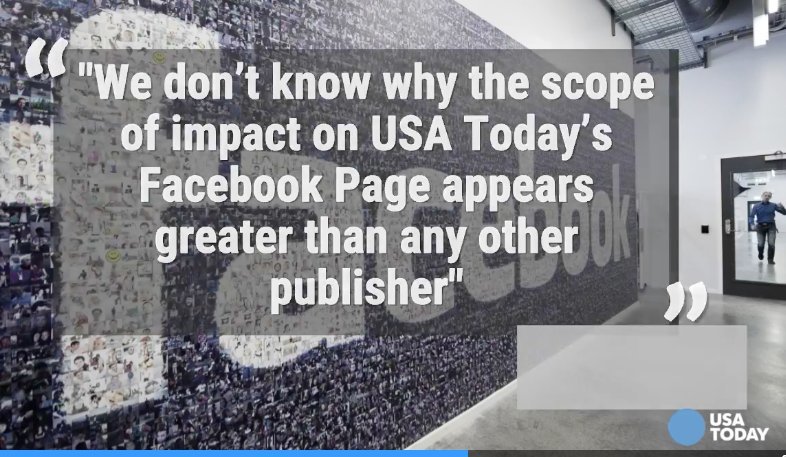
Regardless of motive, perhaps most worrying thing about the USA Today engagement saga is showing just how susceptible Facebook has been to large scale manipulation. The platform is a hugely important destination for consuming news in the US and beyond. The idea that a single entity could be influencing what news audiences are exposed to is something that Facebook must make serious efforts to address.
